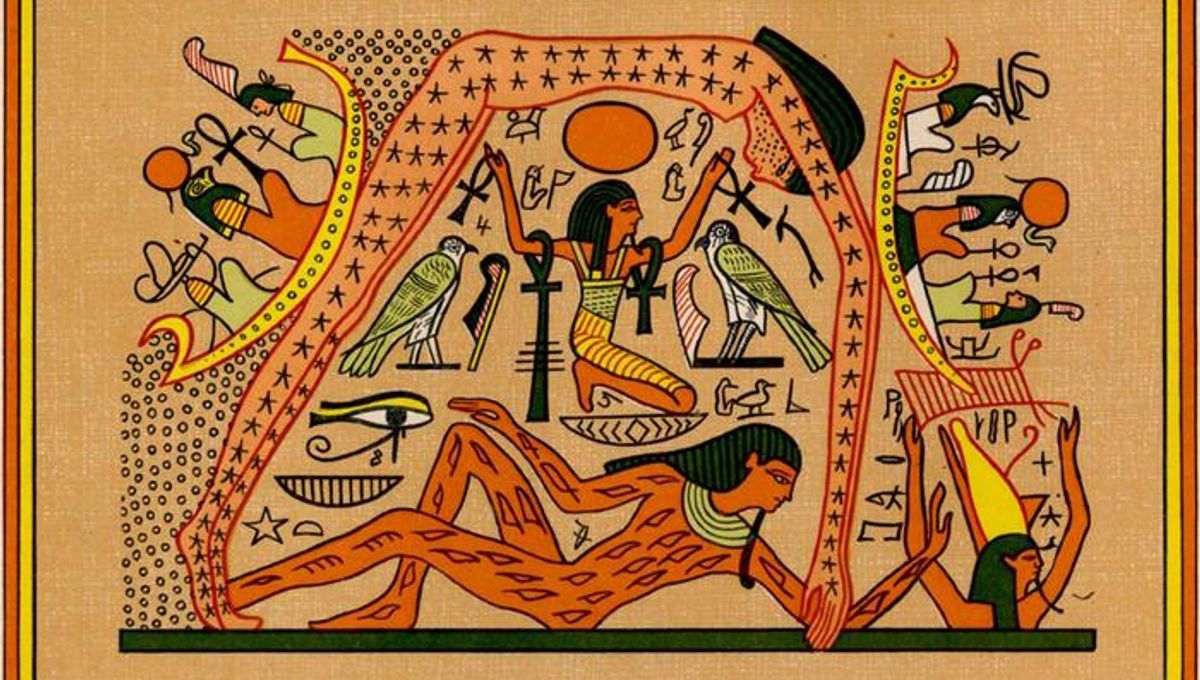
The ancient Egyptians are famous for their reverence of celestial bodies, yet the role that the Milky Way played in their cosmology remains poorly understood by Egyptologists. However, according to a new analysis, the band of stars that streaks across the sky may have had a number of mythological functions, acting as a path to the underworld while also guiding birds along their annual migration route.
Penned by astrophysicist Dr Or Graur from the University of Portsmouth, the new study examined the idea that the Milky Way was represented by the sky goddess Nut, who is often depicted as a star-studded woman arching over the Earth in order to protect it from the menacing waters of the abyss, known as Nun. According to the Book of Nut, also known as The Fundamentals of the Course of the Stars, the sky woman’s primary job was to give birth to the Sun each morning, before swallowing it in the evening.
To help her achieve this task, Nut is perpetually oriented with her rear in the east and her head in the west. The Milky Way, however, changes its position in the sky over the course of the year, running from east to west in the summer months and north to south in the winter.
This discrepancy has cast doubt over the idea that Nut represents the galaxy. However, after consulting numerous funerary papyri found in Ancient Egyptian tombs, Graur identified several depictions of Nut with her arms outstretched at 45 degrees to her body.
Such a pose enables the sky goddess to cover the various alignments of the Milky Way as the year progresses, thus suggesting that she may well have been the embodiment of our galaxy after all. For instance, Graur explains that “in the winter, the Milky Way delineates Nut’s arms, while during the summer months, it sketches out her torso (or backbone).”
Seeking further assurances for Nut’s association with the Milky Way, the study author looked for similarities between her role in Ancient Egyptian mythology and other representations of the star gods in cultures around the world. For instance, according to one Egyptian Coffin Text, Nut is described as a “ladder” by which the souls of the dead are able to ascend to the afterlife, echoing the role of the Milky Way in Native American mythology.
“Many Native American peoples across North America view the Milky Way as a road along which the spirits of the dead travel to the afterlife,” writes Graur. “The Lakota name for the Milky Way is Wanáǧi Thacháŋku, the Spirits’ Road, which the Lakota follow to heaven when they die.”
Similarly, he explains that “The dead of the Yucatec Maya travel along the Milky Way at night,” with the dark band of the Milky Way’s Great Rift envisioned as a highway leading straight to the underworld.
Yet another passage from the Book of Nut describes how birds appear from the goddesses’ northern end each winter as they migrate south from Europe to Africa. In isolation, this does little to prove that Nut represents the Milky Way, although such a link becomes clearer when one considers the associations between the band of stars and bird migration in other Indigenous cultures.
“This link still exists today in the name given to the Galaxy by Finland, Estonia, and several Baltic states: ‘Birds’ Path’ (e.g., Linnunrata in Finnish or Paukščių Takas in Lithuanian),” writes Graur.
Overall, Graur’s findings shine a light on the mystery of Nut and her relationship with the Milky Way, indicating that different parts of her body are capable of representing the stars at different times of year. “My study also shows that Nut’s role in the transition of the deceased to the afterlife and her connection to the annual bird migration are consistent with how other cultures understand the Milky Way,” he explained in a statement.
The study has been published in the Journal of Astronomical History and Heritage.
Source Link: In Ancient Egypt, The Milky Way Was A Ladder To The Afterlife